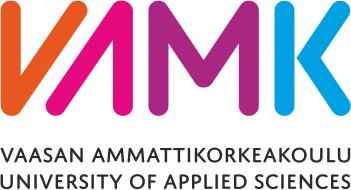
Project information:
Official name of the project: Optimal operation and decentralized control of offshore DC grid with RES/electrolyzer and hybrid energy storage system
Duration of the project: 19.12.2024 - 14.12.2027
Project coordinator: The University of Southern Denmark (SDU)
Project partners: Vaasa University of Applied Sciences, Vaasa University of Applied Sciences, University of South-Eastern Norway, Norwegian University of Science and Technology, Danfoss Drives Oy, Innocell ApS, Brunvoll Mar-El AS, Wattn AS
Funding: Business Finland
Contact person in VAMK:
Adebayo Agbejule, Principal Lecturer (School of Technology)
tel. +358 207 663 301, adebayo.agbejule@vamk.fi
Project description
The OptiDCG4H2 project is a pioneering initiative to reduce the levelised cost of hydrogen (LCoH) in offshore hydroelectric power generation systems. To achieve this goal, the project will focus on the optimal design and operation of offshore hydrogen generation systems consisting of offshore electrolysers connected to an offshore wind turbine via an islanded MVDC network. It is proposed to incorporate a hybrid energy storage system (battery + innovative low-cost supercapacitor) to compensate for wind power fluctuations and thus prevent electrolyser degradation. Prototypes of business models for the new technology will be developed to assess cost metrics and evaluate the future potential of this technology for low-cost hydrogen production.
Goals
The project will focus on two key issues for the clean energy transition, namely green hydrogen and energy storage. Electrolysis technology and storage systems are key to achieving the EU’s goal of becoming the first climate neutral continent by 2050. In this project we focus on the design, control and operation of an islanded green hydrogen production system using the MVDC grid to connect wind turbines with electrolysers and storage units.
Results
The project has resulted in the creation of a business model that presents key economic metrics such as the levelised cost of hydrogen (LCOH), payback period and net present value (NPV) and their sensitivity analysis. In addition, an optimised hybrid wind and energy storage system for hydrogen production has been developed to improve the efficiency and economic viability of the system. A techno-economic model has also been completed, identifying synergies between different energy sources such as hydrogen, offshore wind, supercapacitors and battery capacity, and providing insights for system optimisation. The results of the project will provide a practical solution for cost-effective green hydrogen production and support the transition to more sustainable energy sources.









